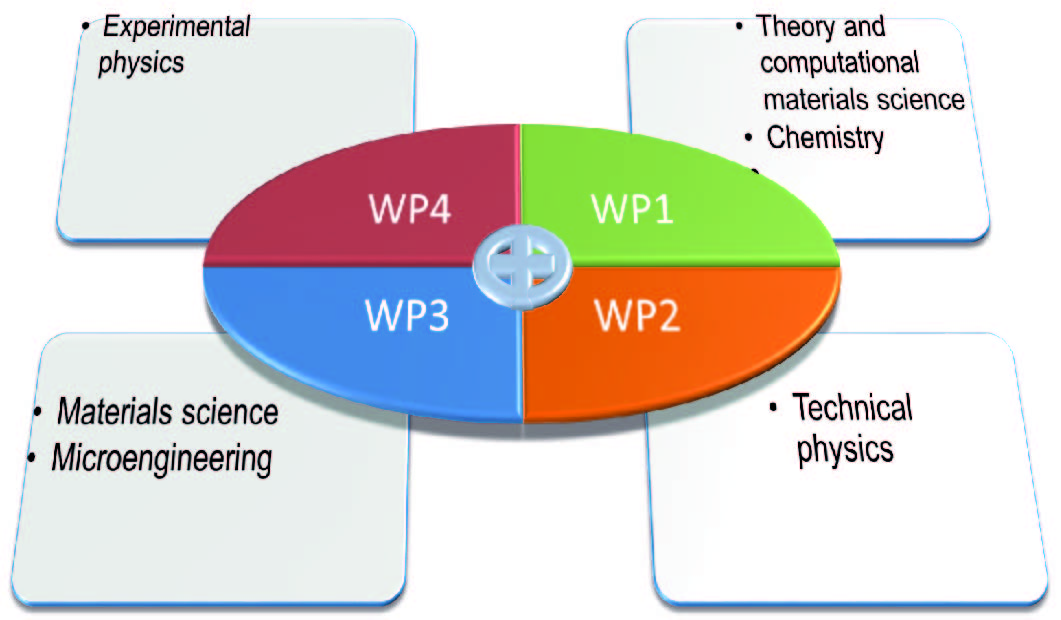Introduction
Topological phases of matter are of great fundamental interest and hold promises for advancing modern information technology. In case of magnetic materials (ferro-, ferri-, and antiferromagnetic materials) the topologically protected magnetic skyrmions (and anti-skyrmions) have generated large research efforts in both theoretical and experimental condensed matter physics and materials science. Skyrmions are nanoscopic spin whirls which are efficiently controlled by current flow and electric fields. They exist both as individual nanoobjects and periodically arranged in large arrays. Skyrmions would allow one to store, transmit and process information, but interdisciplinary research efforts are needed to tailor and functionalize skyrmions in appropriately optimized magnetic thin films and nanostructures.
The sinergia network Nanoskyrmionics funded by the Swiss National Science Foundations via grant 171003 combines computational and experimental materials science, physical chemistry, condensed matter physics, microengineering, nanoscience and technical physics at a large-scale facility to tackle the challenges when aiming at the functionalization of non-collinear spin structures such as skyrmions. More than 20 researchers from EPFL, University of Basel and Paul Scherrer Institute work closely together and apply complementary theoretical and experimental techniques to newly synthesized materials that host topological phases such as skyrmions.
Work packages
The research considers four work packages WP1 to WP4 headed by Prof. O. Yazyev/Dr. A. Magrez (WP1), Dr. J. White/Prof. F. Carbone (WP2), Prof. Dirk Grundler/Prof. A. Fontcuberta (WP3), and Prof. M. Poggio/Prof. H. Ronnow (WP4):
